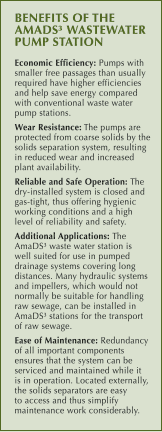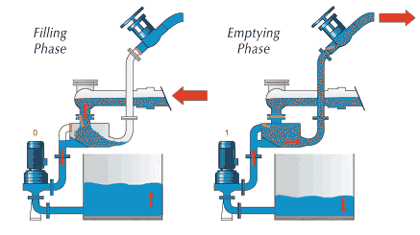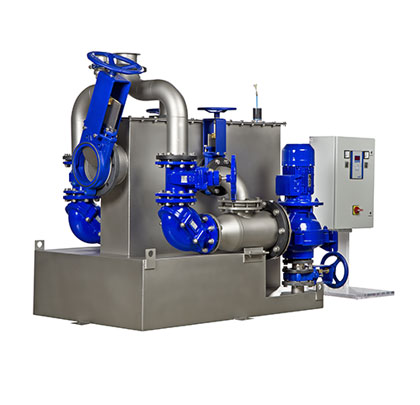Solid materials suspended in domestic sewage or industrial wastewater can cause serious problems for pumps in wastewater management facilities. Solid chunks such as pieces of wood, metal or plastic can get lodged in a pump’s throat, reducing the flow and even jamming the impeller. More insidiously, fibrous wastes can collect in large rope-like tangles that can block pipes or jam pumps. Fibrous solid wastes are a growing problem, due to the increasing popularity of products such as cleaning wipes, disposable diapers and mop pads. While these products are intended to be disposed of as solid waste, consumers often find it convenient to simply flush them down a toilet and into the wastewater stream.

TAKING A NEW APPROACH
A variety of special impellers have been developed to help wastewater pumps to deal with solids in the waste stream. However, these typically have lower hydraulic efficiency than conventional impellers and are never 100 percent effective. Operators of wastewater treatment facilities are all too often faced with the messy and time-consuming task of clearing pumps.
KSB’s innovative AmaDS3 pump station takes a different approach to the solids in the waste-stream problem. This device is intended for use in geographically dispersed wastewater collection systems where water from a remote site needs to be pumped to a central treatment facility. To minimize blockages (and down-time), the AmaDS3 is designed so that the pumps have less direct contact with solids in the water. This is achieved through a flushing cycle. Wastewater entering the pump station passes through a pair of separation chambers that screen out most solid chunks and fibrous material.

INTELLIGENT PUMPING THROUGHOUT
The relatively solids-free water continues to a holding tank. When the control system senses that the tank is nearly full, it turns on pumps that reverse the flow back though the solids separation chamber. A check valve prevents flow back through the inlet pipe, so that the water—once again carrying the solid materials in suspension—is forced through the outlet piping, downstream to the next stage in the processing cycle. Since the pumps handle only pre-screened water, there is much less risk that these vital components will become jammed with solid materials.
AmaDS3 pump stations are built as a sealed unit, designed to be installed in a dry well. Since the exterior remains dry and clean, maintenance is less dirty and difficult. The pumps are optimized for hydraulic performance so that these units can deliver significantly lower energy costs than submerged pumps with efficiency-robbing anti-clogging features.
AN IDEAL SOLUTION
These pump stations are ideal for wastewater management systems that serve large geographical areas since they provide operators with a reliable, low-maintenance and efficient way of collecting sewage and industrial wastewater from distant corners of their territory. ■
About The Author
Dirk Ruppert is the national business development manager for KSB Canada (email: druppert@ksbcanada.com) and the head of the North America and Mexico chapter of the German Water Partnership. The KSB Group provides sales and service for pumps for the industrial, municipal, energy, mining, agricultural and building services sectors. To contact KSB Canada, call 905.568.9200 or visit www.ksb.ca. For more information about the AmaDS3 pump station, visit amads.ksb.com.
MODERN PUMPING TODAY, April 2015
Did you enjoy this article?
Subscribe to the FREE Digital Edition of Modern Pumping Today Magazine!


